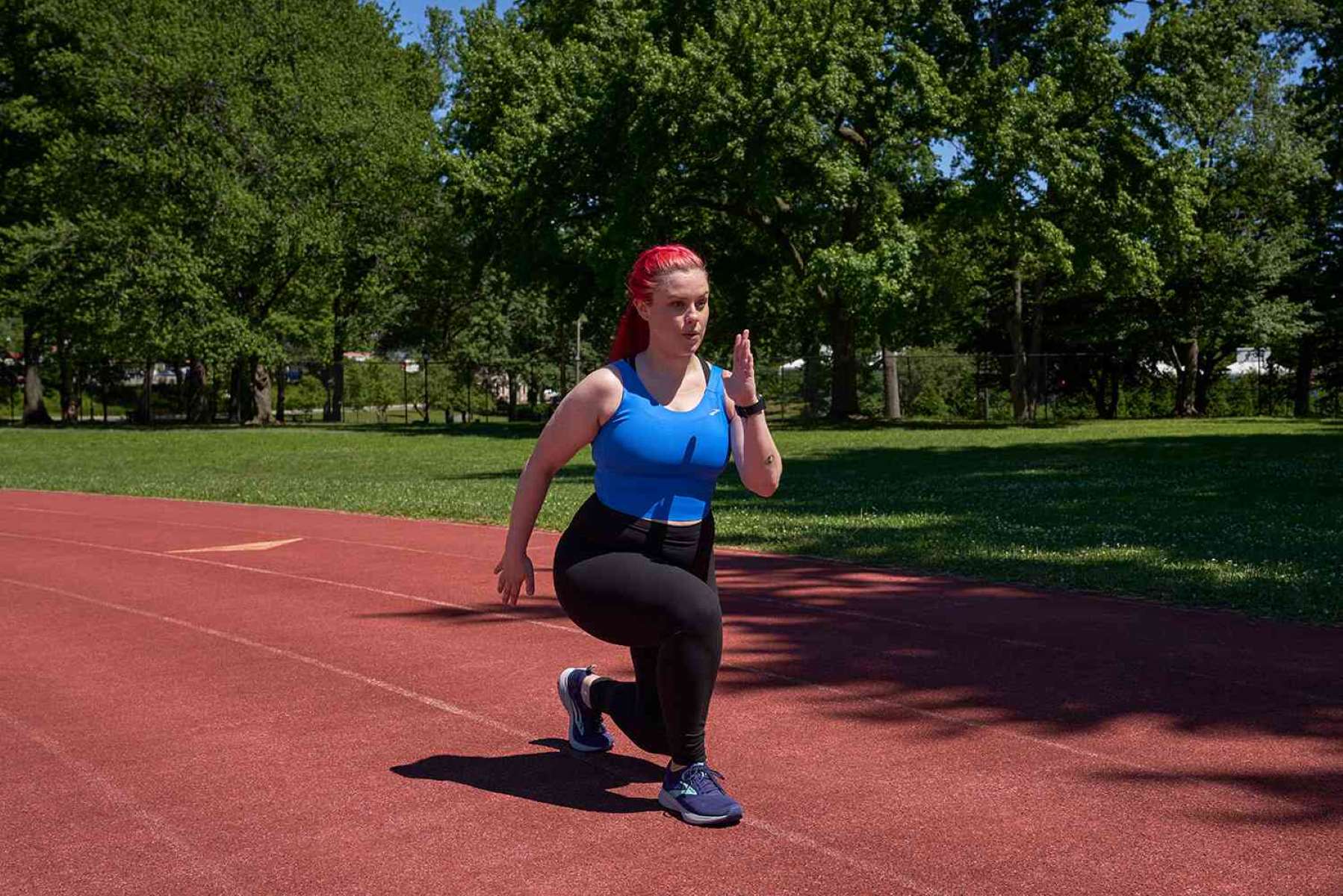Home>Misc>Featured>What Happens To Muscles When You Exercise


Featured
What Happens To Muscles When You Exercise
Published: October 2, 2023
Discover what happens to your muscles when you exercise! Get featured tips on how exercise impacts muscle growth, strength, and overall fitness.
Introduction
When it comes to maintaining a healthy and active lifestyle, exercise is often at the forefront of our minds. Whether it’s hitting the gym, going for a run, or participating in a sport, we know that exercise offers numerous benefits for our overall well-being. But have you ever wondered what exactly happens to your muscles when you exercise?
Our muscles play a vital role in every movement our bodies make. From lifting weights to taking a simple walk, our muscles are constantly working to provide the necessary force and movement. Understanding the effects of exercise on our muscles can not only help us maximize our performance but also enable us to make informed decisions about our training and recovery strategies.
In this article, we will explore the fascinating world of muscles and delve into the intricate processes that occur when we engage in exercise. We will discuss how muscles function, the immediate effects of exercise on muscles, muscle contraction, and energy production. Furthermore, we will explore the concept of muscle hypertrophy and how exercise impacts muscle fibers.
Additionally, we will explore exercise-induced muscle damage and repair mechanisms that occur in response to physical activity. Lastly, we will highlight the muscle adaptations that take place over time as a result of consistent exercise.
So, if you’re ready to dive into the inner workings of your muscles and understand the wonders that exercise can do, let’s get started on this insightful journey!
Skeletal Muscles: An Overview
Skeletal muscles are one of the three major types of muscles in the human body, along with smooth muscles and cardiac muscles. They are the muscles responsible for voluntary movement, meaning we have conscious control over their actions. Skeletal muscles are attached to bones via tendons and work together to support the body, maintain posture, and facilitate movement.
These muscles are composed of long, cylindrical cells called muscle fibers. Each muscle fiber contains bundles of smaller units called myofibrils, which are responsible for muscle contraction. Myofibrils are made up of even smaller units called sarcomeres, which are the basic functional units of muscle contraction.
Skeletal muscles are highly vascularized, meaning they have an extensive network of blood vessels. This is crucial for supplying oxygen and nutrients to the muscles during exercise. Additionally, skeletal muscles are innervated by motor neurons, which transmit signals from the brain to the muscles to initiate movement.
It’s important to note that skeletal muscles come in various sizes and shapes, depending on their location and function. Some muscles, like the quadriceps in the thighs or the biceps in the arms, are larger and more powerful, while others, like the muscles in the fingers or the facial muscles, are smaller and more specialized.
Overall, skeletal muscles are remarkable structures that enable us to perform a wide range of movements, from simple everyday tasks to complex athletic maneuvers. Understanding the basics of skeletal muscles provides a foundation for exploring the effects of exercise on these incredible tissues.
How Muscles Function
Before we dive into the effects of exercise on muscles, it’s important to understand how muscles function. Muscles work through a complex process called muscle contraction, which involves the interaction of various proteins within muscle fibers.
When we decide to move a certain body part, a signal is sent from the brain to the motor neurons, which activate the specific muscle or group of muscles involved in that movement. These motor neurons release a chemical messenger called acetylcholine, which binds to receptors on muscle fibers and triggers a series of events.
Within each muscle fiber, there are thin filaments called actin and thick filaments called myosin. When the signal from the motor neurons is received, these filaments slide past each other, resulting in a contraction. This sliding filament theory is the basis for understanding how muscles generate force and movement.
During muscle contraction, the sarcomeres within a muscle fiber shorten, causing the overall muscle to contract. This contraction allows the muscle to generate force, enabling us to perform a wide range of movements, from lifting heavy weights to making precise movements with our fingers.
However, for muscles to contract, they require a constant supply of energy. Adenosine triphosphate (ATP), the energy currency of the body, is used to power muscle contractions. The body relies on various energy systems to produce ATP, including the immediate energy system (which uses stored ATP and creatine phosphate), the anaerobic energy system (which utilizes glucose for ATP production), and the aerobic energy system (which involves the breakdown of carbohydrates and fats in the presence of oxygen).
By understanding how muscles function and the energy requirements for muscle contractions, we can appreciate the importance of providing our muscles with adequate fuel and optimizing our energy systems through proper nutrition and training.
Immediate Effects of Exercise on Muscles
When we engage in exercise, our muscles undergo immediate changes to meet the increased demands placed upon them. These changes are essential for our muscles to perform optimally and adapt to the stress of physical activity.
One of the immediate effects of exercise on muscles is increased blood flow. As we start to move and contract our muscles, blood vessels dilate to allow more oxygen and nutrient-rich blood to reach the working muscles. This increased circulation helps deliver essential fuel and remove metabolic waste products, such as carbon dioxide and lactic acid.
In addition to increased blood flow, exercising muscles also experience a rise in temperature. This increase in temperature is due to the increased metabolic activity in the muscle fibers. The rise in temperature helps improve the efficiency of muscle contractions and promotes flexibility, making our muscles more responsive and less prone to injury.
Another immediate effect of exercise on muscles is the activation of satellite cells. Satellite cells are a type of muscle stem cell that play a crucial role in muscle repair and growth. During exercise, these cells are activated and begin to multiply, helping to repair any muscle damage that may occur during intense exercise. This process is essential for muscle recovery and adaptation.
Furthermore, exercise triggers the release of various hormones and neurotransmitters that play a role in muscle function. For example, the release of adrenaline, also known as epinephrine, increases heart rate, blood flow, and oxygen delivery to the muscles. This hormone helps enhance muscle performance and facilitates energy production.
The immediate effects of exercise on muscles also include the recruitment of motor units. Motor units are made up of a motor neuron and the muscle fibers it innervates. As the intensity of exercise increases, more motor units are recruited to contract the muscle fibers, resulting in greater force production.
Overall, the immediate effects of exercise on muscles involve increased blood flow, temperature regulation, activation of satellite cells, release of hormones and neurotransmitters, and recruitment of motor units. These physiological responses are essential for optimizing muscle performance and setting the stage for muscle adaptation and growth in response to continued exercise.
Muscle Contraction and Energy Production
Muscle contraction and energy production go hand in hand, as the process of muscle contraction requires a continuous supply of energy. Let’s take a closer look at how these two processes work together to help our muscles function during exercise.
As mentioned earlier, muscle contraction occurs when the thin actin filaments and thick myosin filaments within the muscle fibers slide past each other. This sliding filament theory of muscle contraction relies on the interaction between the proteins actin and myosin.
To initiate the sliding filament process and promote muscle contraction, the myosin heads attach to the actin filaments, forming cross-bridges. These cross-bridges then undergo a series of biochemical reactions that cause them to pivot and generate force. As a result, the actin filaments are pulled closer to the center of the sarcomere, shortening the muscle fiber and leading to the contraction of the entire muscle.
Now, let’s explore the energy production aspect of muscle function. The contraction and relaxation of muscles require a constant supply of adenosine triphosphate (ATP), which is the primary energy source for muscle cells. ATP provides the necessary energy for the cross-bridges to form and release, allowing for the sliding of actin and myosin filaments.
During short bursts of intense activity, the immediate energy system comes into play. This system primarily relies on the ATP and creatine phosphate already stored within the muscles. Creatine phosphate is broken down to replenish ATP levels and sustain muscle contractions for a short period of time.
For longer-duration exercises, the anaerobic and aerobic energy systems take over. The anaerobic energy system uses glucose, either stored glycogen or glucose from the bloodstream, to produce ATP in the absence of oxygen. This system is capable of generating energy quickly but has limited capacity.
The aerobic energy system, on the other hand, utilizes oxygen for the breakdown of carbohydrates and fats to produce ATP. This system is the predominant energy pathway during low to moderate intensity exercises and can sustain muscle contractions for an extended period.
It’s worth noting that the exact energy system utilized during exercise depends on the intensity and duration of the activity. Higher intensity exercises, such as sprinting, rely more on the immediate and anaerobic systems, while lower intensity exercises, like jogging or cycling, heavily involve the aerobic system.
Overall, muscle contraction and energy production are closely intertwined. The process of muscle contraction relies on the availability of ATP, which is produced through various energy systems, depending on the exercise intensity and duration. Understanding these mechanisms allows us to optimize our training, fuel our muscles appropriately, and enhance overall performance.
Muscle Hypertrophy: Building Stronger Muscles
When it comes to exercise, many individuals strive to build stronger and more defined muscles. This process, known as muscle hypertrophy, involves the enlargement of muscle fibers, resulting in increased muscle size and strength. Let’s explore the key factors that contribute to muscle hypertrophy and how exercise plays a crucial role in this process.
Muscle hypertrophy occurs as a response to a significant increase in mechanical tension and metabolic stress placed on the muscles. Mechanical tension refers to the force generated within the muscle fibers during resistance training. This tension occurs when muscles contract against an external load, such as lifting weights or performing bodyweight exercises.
When the muscles are subjected to mechanical tension, it triggers a series of cellular responses within the muscle fibers. This includes the activation of satellite cells, increased protein synthesis, and the production of growth factors that promote muscle growth and repair.
One of the primary drivers of muscle hypertrophy is progressive overload. This principle involves gradually increasing the demands placed on the muscles over time. By consistently challenging the muscles with heavier weights or higher resistance, we create a stimulus that forces the muscle fibers to adapt and grow stronger.
In addition to mechanical tension, metabolic stress also plays a role in muscle hypertrophy. Metabolic stress occurs when muscles accumulate metabolic byproducts, such as lactate and hydrogen ions, during intense exercise. This buildup creates an environment within the muscle that triggers adaptive responses, including an increase in protein synthesis and the release of growth factors.
Effective muscle hypertrophy requires a combination of both mechanical tension and metabolic stress. By incorporating a variety of resistance training exercises, such as compound movements, isolation exercises, and techniques like drop sets or supersets, you can ensure that your muscles are exposed to different types of stressors, promoting overall muscle growth and development.
Additionally, proper nutrition and adequate recovery are essential for muscle hypertrophy. Consuming an appropriate amount of protein, carbohydrates, and healthy fats supports muscle repair and growth. Sufficient rest and recovery allow the muscles to rebuild and adapt to the training stimulus, preventing overuse injuries and optimizing muscle hypertrophy.
It’s important to note that muscle hypertrophy is a gradual process that takes time and consistency. Results vary among individuals, and genetics can also play a role in muscle growth potential. However, by following a well-designed exercise program that incorporates progressive overload, proper nutrition, and adequate recovery, you can maximize your chances of achieving noticeable muscle hypertrophy and building stronger muscles.
Effects of Exercise on Muscle Fibers
Engaging in regular exercise can have profound effects on our muscle fibers. The type and intensity of exercise play a significant role in determining the specific adaptations that occur within these specialized cells. Let’s explore the primary effects of exercise on muscle fibers and how they contribute to improved muscle function and performance.
One of the most noticeable effects of exercise on muscle fibers is an increase in size, known as muscle hypertrophy. This increase occurs primarily due to the growth and thickening of individual muscle fibers. When we subject our muscles to resistance training or other forms of intense exercise, it creates microscopic damage to the muscle fibers. In response to this damage, the body initiates a repair process that leads to muscle fiber growth and an overall increase in muscle size.
Another effect of exercise on muscle fibers is an increase in the number of mitochondria. Mitochondria are the powerhouses of the cells, responsible for producing energy (in the form of ATP) through aerobic metabolism. Regular aerobic exercise, such as running or cycling, can stimulate the proliferation of mitochondria within muscle fibers. This adaptation improves the muscles’ capacity to efficiently generate energy, enhancing endurance and stamina.
Endurance exercise also promotes the development of slow-twitch muscle fibers. These fibers have a high capacity for aerobic energy production and are resistant to fatigue. Regular endurance training, such as long-distance running or swimming, can lead to an increase in the proportion of slow-twitch muscle fibers within a muscle. This adaptation is associated with improved aerobic performance and endurance capacity.
On the other hand, resistance training, which involves repetitive contractions against resistance, promotes the development of fast-twitch muscle fibers. Fast-twitch fibers have a higher capacity for generating force and power but fatigue more quickly compared to slow-twitch fibers. By subjecting the muscles to high-intensity resistance exercises, we can induce an increase in the size and strength of fast-twitch muscle fibers. This adaptation is associated with enhanced explosive power and strength.
In addition to changes in fiber size and type, exercise also increases the muscle’s ability to store glycogen, which is the primary fuel source for intense physical activity. Regular exercise and proper carbohydrate intake promote the storage of glycogen within the muscle fibers, allowing for a greater availability of energy during exercise. This adaptation is particularly beneficial for athletes or individuals engaging in high-intensity exercise.
Overall, exercise elicits several remarkable effects on muscle fibers. It leads to muscle hypertrophy, increases the number of mitochondria, promotes the development of specific muscle fiber types, and enhances glycogen storage capacity. Understanding these adaptive responses can help individuals tailor their exercise regimens to achieve specific goals, whether it’s building muscle size and strength or improving endurance performance.
Exercise-Induced Muscle Damage and Repair
Engaging in exercise, especially high-intensity or unfamiliar activities, can sometimes lead to exercise-induced muscle damage. This damage occurs due to the stress placed on the muscle fibers during exercise, resulting in microscopic tears in the muscle tissue. While it might sound alarming, exercise-induced muscle damage is a normal and necessary process for muscle growth and adaptation.
During activities such as resistance training or eccentric movements (where the muscle lengthens while under tension), the mechanical stress placed on the muscle fibers can cause small disruptions in the muscle fibers, leading to localized inflammation and soreness. This phenomenon is often referred to as delayed-onset muscle soreness (DOMS).
Exercise-induced muscle damage triggers a series of adaptive responses to repair and strengthen the affected muscle fibers. One of the key processes involved in the repair is the activation of satellite cells, which are muscle stem cells. These satellite cells proliferate and fuse with damaged muscle fibers to facilitate repair and regeneration.
In addition to satellite cells, the body also mobilizes an immune response to help repair damaged muscle tissues. The inflammatory response plays a crucial role in recruiting immune cells and growth factors to the site of muscle damage. These factors aid in the removal of debris and facilitate the rebuilding process.
As the muscle fibers repair, they also undergo remodeling and reorganization. This remodeling process involves the synthesis of new contractile proteins, alignment of muscle fibers, and the formation of new blood vessels to support the growing tissue. The end result is stronger, more resilient muscle fibers that are better equipped to handle future exercises.
It’s important to note that exercise-induced muscle damage is a normal part of muscle adaptation and does not necessarily indicate injury. The level of muscle damage can vary depending on various factors such as exercise intensity, duration, and individual susceptibility.
Proper recovery and rest are essential for the repair of exercise-induced muscle damage. Giving the muscles enough time to recover allows for the completion of the repair process and minimizes the risk of overtraining or further damage. Adequate nutrition, including sufficient protein intake, is also crucial for providing the building blocks necessary for muscle repair and growth.
Understanding the process of exercise-induced muscle damage and repair allows individuals to optimize their training strategies. By gradually progressing exercise intensity, incorporating proper recovery protocols, and monitoring their body’s response, individuals can promote muscle adaptation and minimize the risk of excessive damage or injury.
Muscle Adaptations to Exercise
When we engage in regular exercise, our muscles undergo a series of remarkable adaptations to meet the demands placed upon them. These adaptations enable our muscles to become stronger, more efficient, and better suited for the specific types of activities we regularly perform. Let’s explore the key muscle adaptations that occur in response to exercise.
One of the primary adaptations to exercise is an increase in muscle size, known as hypertrophy. Through resistance training or other forms of intense exercise, muscle fibers experience microscopic damage, triggering a repair and remodeling process that leads to increased muscle fiber size. This increase in muscle size is accompanied by a greater capacity to generate force, resulting in increased strength.
In addition to hypertrophy, regular exercise also promotes an increase in the number of myofibrils within the muscle fibers. Myofibrils are the contractile units of muscle and play a crucial role in muscle contraction. By increasing the number of myofibrils, muscles become more efficient at generating force and contracting with greater power.
Another key muscle adaptation to exercise is improved muscle fiber recruitment. Through repeated exposure to specific movements or exercises, our brain becomes more efficient at coordinating the activation of motor units within the muscles. This improved neural coordination results in better control and precision in movement, enhancing overall performance.
Endurance exercise, such as running or cycling, prompts several adaptations within the muscles to enhance aerobic capacity. The increase in the number of mitochondria within the muscle fibers allows for greater production of ATP, the energy currency of the cells, through aerobic metabolism. This increased mitochondrial density improves the muscles’ ability to sustain prolonged exercise and effectively utilize oxygen.
Regular exercise also enhances the muscles’ ability to store and utilize glycogen. Glycogen is the stored form of glucose, which is an essential fuel source during high-intensity exercise. With consistent exercise, muscles adapt by increasing their glycogen storage capacity, ensuring a readily available energy source for intense bouts of activity.
Furthermore, exercise promotes an increase in capillary density within the muscles. Capillaries are tiny blood vessels that deliver oxygen and nutrients to the muscle fibers. By increasing the number of capillaries, this adaptation enhances the delivery of oxygen and nutrients, as well as the removal of waste products, during exercise.
Overall, exercise elicits a wide range of adaptations in our muscles, including hypertrophy, increased myofibril content, improved muscle fiber recruitment, enhanced aerobic capacity, increased glycogen storage, and improved capillary density. These adaptations allow our muscles to become stronger, more efficient, and better suited for the specific demands of our chosen activities.
Conclusion
Understanding the effects of exercise on our muscles is key to maximizing our performance and achieving our fitness goals. Through regular exercise, our muscles undergo remarkable adaptations that allow them to become stronger, more efficient, and better suited for the specific demands we place upon them.
We learned that skeletal muscles play a vital role in every movement we make, and they consist of muscle fibers that contract to produce force. Exercise immediately impacts our muscles by increasing blood flow, raising temperature, activating satellite cells, and recruiting motor units. The process of muscle contraction relies on the interaction between actin and myosin filaments within the muscle fibers, while energy production requires a continuous supply of ATP through various energy systems.
Muscle hypertrophy, or the enlargement of muscle fibers, can be achieved through progressive overload and proper nutrition. Resistance training leads to the growth and thickening of muscle fibers, while endurance exercise promotes the development of slow-twitch fibers and an increase in mitochondria. Exercise-induced muscle damage and subsequent repair mechanisms are essential for muscle growth and regeneration.
We also explored the adaptations that occur within our muscles in response to exercise. These adaptations include hypertrophy, increased myofibril content, improved muscle fiber recruitment, enhanced aerobic capacity, increased glycogen storage, and improved capillary density.
As we conclude this journey into the world of muscles and exercise, it is important to note that everyone’s response to exercise is unique. Factors such as genetics, age, and overall health can influence the rate and extent of muscle adaptations. However, by incorporating regular exercise, proper nutrition, and adequate rest and recovery into our lifestyle, we can optimize our muscle function, improve our performance, and maintain a healthy and active body.









